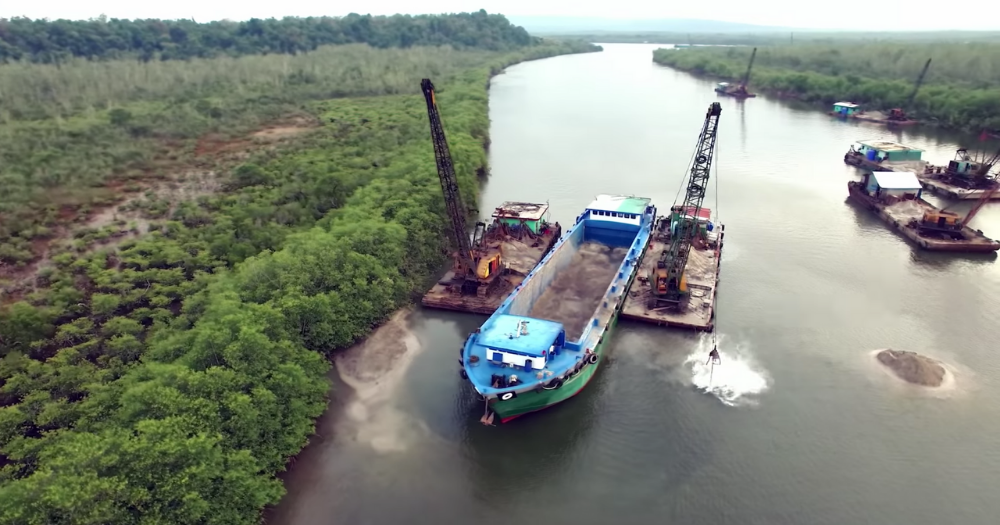Singapore's efforts to expand its land area has been the subject of media coverage over the years.
Thanks to a short 16-minute film put up online recently, the little red dot has come under the spotlight again.
Documentary
Lost World is a short documentary film by award-winning Cambodian filmmaker, Kalyanee Mam.
It was recently picked up and curated by U.S. magazine The Atlantic, which boosted its circulation.
The short video honed in on the story of a young Cambodian woman, Phalla Vy -- using her to drive the narrative that the export of Cambodian sand to Singapore has had way too many effects on her and many others like her.
Vy lives in a small fishing village off the island of Koh Sralau, where villagers and the ecosystem alike are suffering from the negative impact of dredging.
What is dredging?
Lost World shows numerous footage of large ships plunging huge claw-like mechanisms into the waters to dredge the sand, followed by images of barges discharging sand into -- what the viewer would assume to be -- Singapore waters.
According to the video, the claim is that Singapore is one of the world's largest importers of sand.
From 2007 to 2017, the small island-nation imported over 80 million tonnes of sand from Cambodia, the video alleged.
But what exactly is sand dredging?
Dredging is the removal of sediments from the bottom of rivers, oceans and other water bodies, as defined by the National Oceanic and Atmospheric Administration (NOAA).
Aside from the construction of landfills and production of concrete, sand is also used for land reclamation, where parts of the sea are filled to create new land.
Land and livelihoods lost
In the video, Vy lamented the loss of her land, as well as the accompanying loss of her livelihood to wealthy countries.
"Like everyone who lives here, all I've ever wanted is to live in peace with my family. The sand dredging is a threat to all of this."
Dredging damaged the mangrove forests, which Vy and her village depended on for their livelihood -- they collect snails and clams found in the mangroves, presumably to be sold.
 Vy collecting snails in the mangroves. Photo from The Atlantic, YouTube
Vy collecting snails in the mangroves. Photo from The Atlantic, YouTube
She said her family has been unable to catch large amounts of crabs and other seafood as compared to before the dredging started.
Vy's grandmother chimed in, while peeling a small mound of crabs:
"Before, we could catch right near our houses. We could fish, cast our nets, and even set crab traps. But since they started mining, there are no more islands, no more crabs, and here, women are the most affected."
Due to the loss of income, the women of the fishing village had to leave their children and homes behind to seek work.
"The law has given us all kinds of freedoms. Here we only have the right to sit, shed tears and witness the destruction," Vy said.
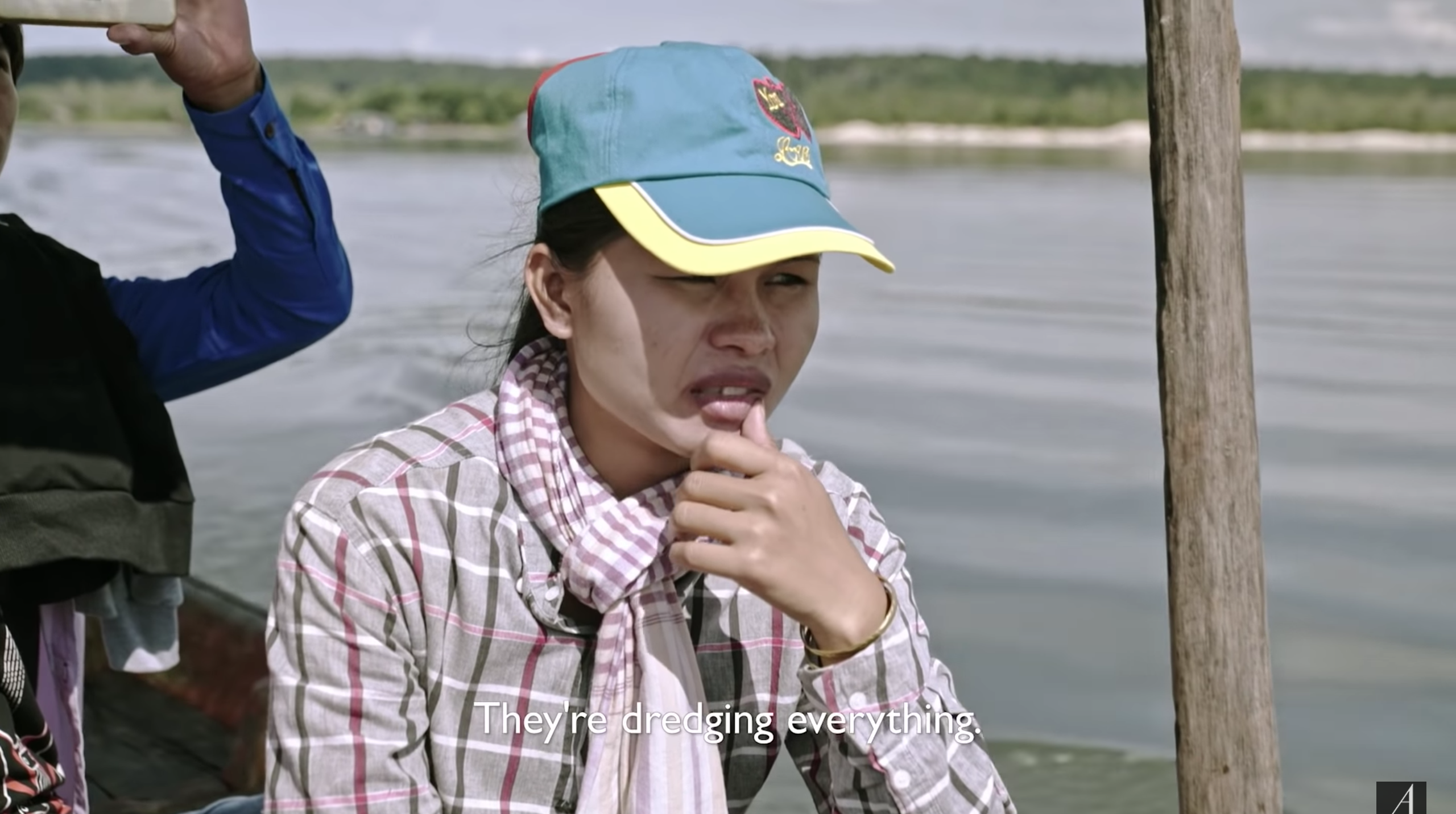 Photo from The Atlantic, YouTube
Photo from The Atlantic, YouTube
Destructive to ecosystems, especially mangroves
Dredging is a controversial and highly destructive process, especially on the environment.
Digging up the seabed or riverbed causes damage to the habitats of aquatic creatures and plants.
The machines also disturb the sand, causing the sand to settle on and smother surrounding creatures and aquatic plants.
Dredging can even alter a river's course and cause it to shrink in size.
In Vy's case, mangroves, which are particularly sensitive habitats, suffer greatly from dredging.
Mangroves require a type of soil with a specific composition for them to thrive in. Dredging can alter that.
The large amount of sediments drifting in the water after dredging can also smother mangrove roots, which mangrove trees use for breathing.
The destruction of mangroves becomes an even more pertinent issue in terms of global warming, as wetlands are important carbon sinks for absorbing more carbon dioxide than they release.
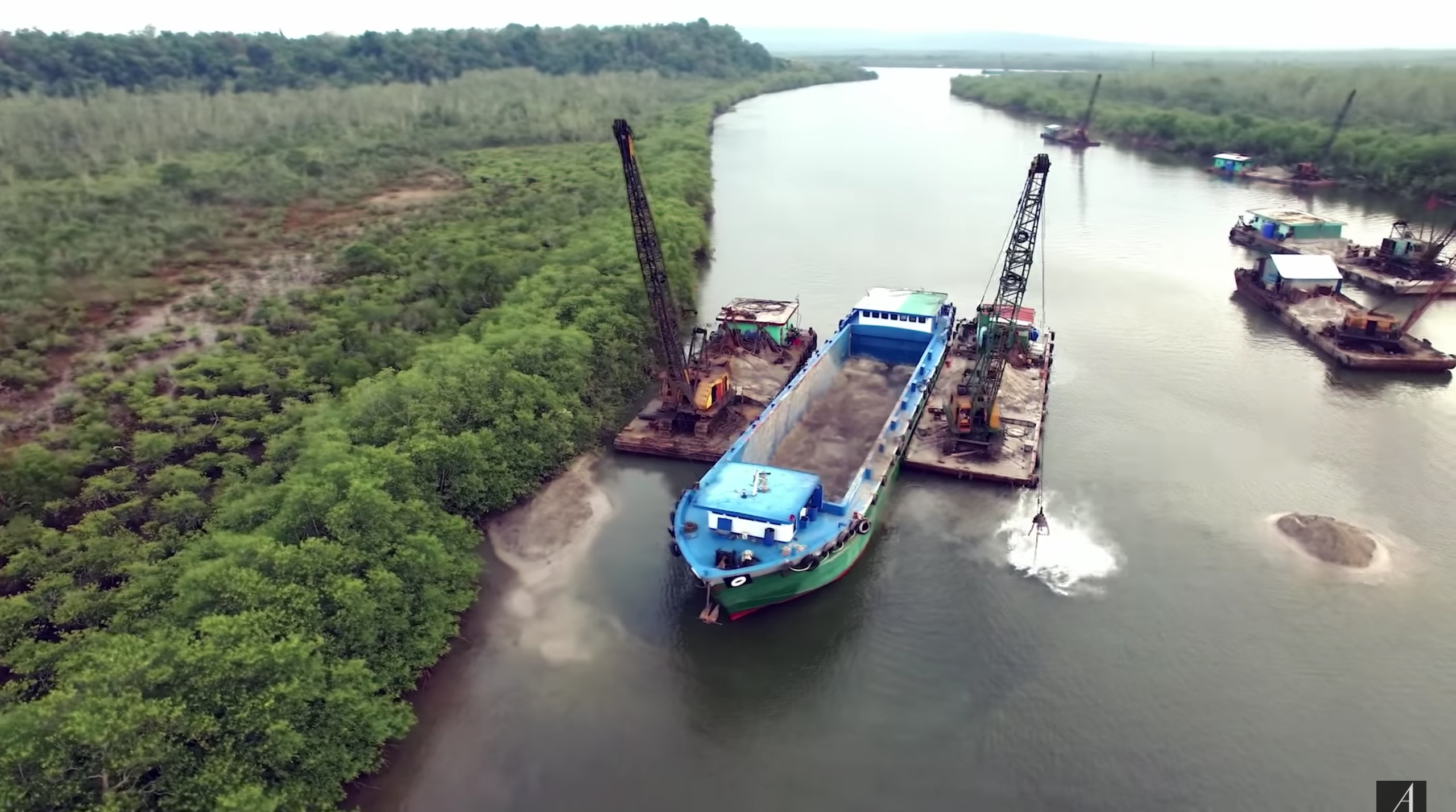 Photo from The Atlantic, YouTube
Photo from The Atlantic, YouTube
Where sand ends up
In a change of scenery, Vy was brought to Gardens By The Bay in Singapore -- the tourist destination which was built on 101 hectares of reclaimed land.
In a sorrowful moment in the documentary, she said of Singapore and its people:
"When I see all the people walking, I want to tell them... this land is my land."
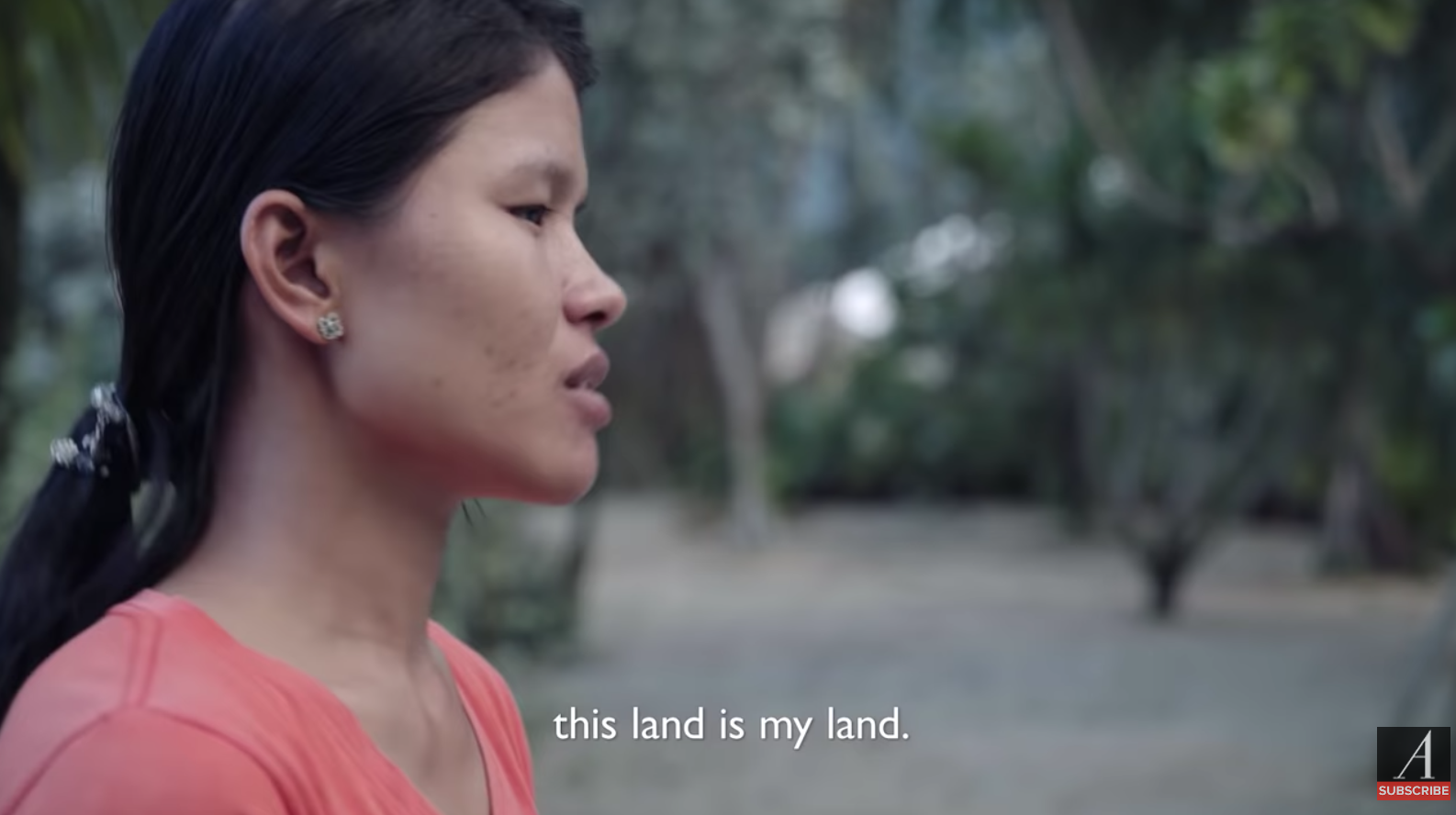 Screenshot from The Atlantic, YouTube.
Screenshot from The Atlantic, YouTube.
Vy's bitterness at seeing how luxurious and modern places were built -- possibly at the expense of her village -- was apparent.
However, it cannot be confirmed if Gardens By The Bay was indeed built using Cambodian sand, in particular.
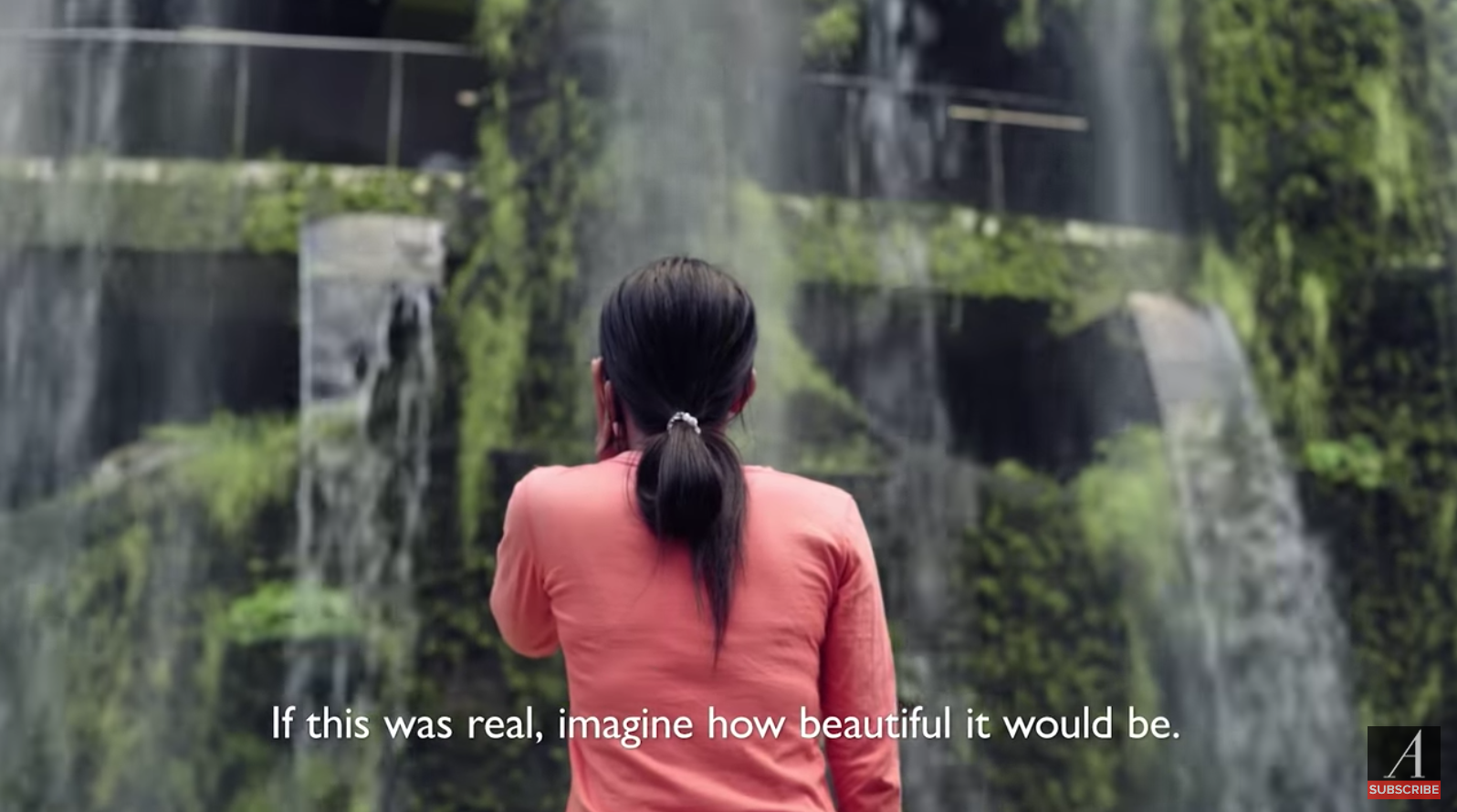 Screenshot from The Atlantic, YouTube.
Screenshot from The Atlantic, YouTube.
Ban on sand exports
The little red dot is still little, but bigger than before.
Singapore’s land area has expanded by 25 percent through reclamation over the past two centuries to meet the needs of its rapid development.
However, land reclamation has sparked much controversy over its environmental and ethical implications.
In the past, most of Singapore's sand imports came from Malaysia, Indonesia, Vietnam and Cambodia.
These countries gradually banned sand exports to Singapore over the years.
Cambodia banned sand exports temporarily in November 2016, and enacted a permanent ban in July 2017 following pressure from environmental groups concerned about the impact dredging would have on its coastlines.
According to the Ministry of National Development (MND), Singapore stopped importing sand from Cambodia in November 2016.
In January 2017, there were still alleged discrepancies between the sand trade data submitted by Cambodia and Singapore to the United Nations.
Singapore declared that it imported 73.6 million tonnes of sand from Cambodia since 2007.
However, the Cambodian government reported that it only exported 2.7 million tonnes of sand to Singapore within the same period.
On the other hand, Mam's documentary claimed that Singapore imported 80 million tonnes of sand.
Documentary dated
Despite the ban, some environmental activists still remain sceptical on the ban's enforcement.
Nevertheless, it should be noted that Lost World was first put out in 2018 on YouTube by Cambodian non-profit, Mother Nature.
Therefore, the events in the film might have happened before Cambodia imposed its sand ban in 2017.
Corruption in sand dealing
While the documentary drew attention to sand importers' lack of accountability to source countries like Cambodia, it conveniently ignored the problems deeply rooted in those countries.
In Cambodia, specifically, the sand market is reportedly steeped in corruption.
Mother Nature compared sand mining companies to "criminal syndicates" and "mafias".
They alleged that "everyone, from government agencies, the police, to local authorities" are involved in the elaborate export business.
Laura Schoenberger, a postdoctoral fellow at the University of Ottawa said at a 2018 conference that the volume of sand leaving Cambodia was "absolutely illegal; way beyond the government’s permitted limits".
"Small amounts of sand can be legally exported, but Singaporean import figures reveal that this Cambodian resource is clearly, and rapidly, disappearing. It appears that someone with high level connections in the Cambodian government is making a lot of money."
Mother Nature also cited one sand mining company, Ly Yong Phat Group (LYPG) -- so named after Cambodian tycoon and senator of the ruling party, Ly Yong Phat -- as one of the main players in the illegal sand trade.
Two Mother Nature activists who were previously arrested in 2017 for attempting to photograph LYPG's dredging operations claimed that the company did not have a license to dredge sand.
MND responds
In response to The Atlantic's feature of Lost World, MND reiterated that Singapore stopped importing sand from Cambodia since the temporary sand ban in November 2016.
The ministry also denied any accusations of sand smuggling.
MND stressed that "stringent controls" are in place to ensure contractors carry out dredging works in line with environmental protection laws, and have the proper export permits and documentation.
However, MND did not disclose the countries which Singapore is currently importing sand from.
Reducing reliance on sand
Singapore has taken steps towards reducing its reliance on sand.
In February 2018, it was announced that Singapore would be using a new method of land reclamation called empoldering in Pulau Tekong.
According to Minister for National Development Lawrence Wong, empoldering reduces the amount of sand used, along with construction costs, by about 40 percent.
Empoldering involves building a dike around the area of the sea to be reclaimed.
Water is then drained from the area to create a patch of land that lies below sea level.
Other potential ways of maximising Singapore's land space include building higher, or even building floating cities above the ocean.
Technology for the latter is currently being tested in Japan, and Singapore is an ideal location for its implementation in the future.
Hopefully, more light and clarity can be shed on the operations of the sand dredging industry, and its environmental impact.
Perhaps only then can Vy and her village find peace.
You can watch Lost World below:
&feature=youtu.be
Top photo from The Atlantic, Youtube
If you like what you read, follow us on Facebook, Instagram, Twitter and Telegram to get the latest updates.
